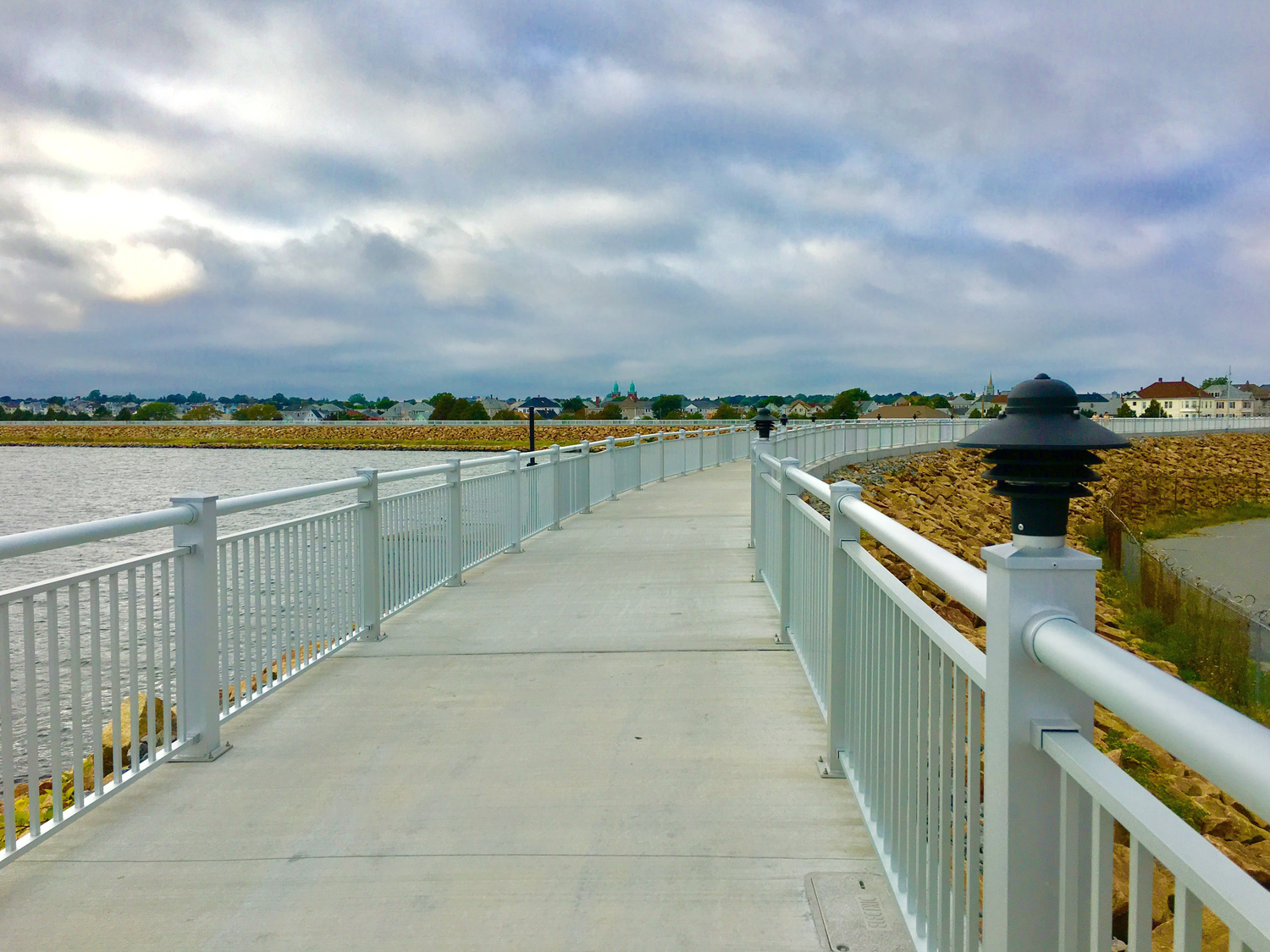Infrastructure, Utilities, & Waste
NB Resilient Goals
Climate change impacts New Bedford's infrastructure, utilities, and waste by damaging critical assets, filling landfills with storm debris, and overwhelming the capacity of our stormwater, wastewater, and drinking water systems. To reduce these impacts, NB Resilient has laid out two goals:
- Reduce waste tonnage 30% by 2030 and become a zero-waste community by 2050.
- Design, build, and maintain all infrastructure to be energy efficient and resilient to the impacts of climate change.
To learn more, read our Infrastructure, Utilities, & Waste Fact Sheet.
Total Waste Reduction
Help Reduce Waste in New Bedford
There are many ways you can help New Bedford reach its waste reduction goals. New Bedford's Department of Facilities and Fleet Management's Solid Waste and Recycling Division offer a wealth of information about minimizing waste and send alerts for special events like hazardous waste drop off days.
Keeping New Bedford's recycling free of contaminants ensures that the material can be remade into new products.
Total Waste Reduction
Discover the Funbrary Collection @ the New Bedford Free Public Library
Wishing you had access to craft supplies or portable DVD players? The New Bedford Public Library has put together the Funbrary, a collection of items that moves beyond the traditional materials found at a library. This collection provides patrons with access to a collection of items that encourages exploration, waste reduction, and learning while saving money. Come visit the library and borrow an item!
Water Use
Water Supply
According to the US EPA, the average person in New Bedford uses 55.5 gallons of water per day. That adds up to over 3.3 million gallons per day. That's enough water to fill Gillette Stadium every 6 months!
In order to supply all that water, New Bedford manages 12,352 acres of land surround five ponds, such as Great Quittacas Pond to maintain a health and clean watershed. Learn more about the City's efforts on the Department of Public Infrastructure's Water Division webpage.
Combined Sewer Overflow
Water Quality and Quality Fisheries
Much of the City’s sewage system is a combined system, the function of which is to collect sanitary flows and stormwater runoff and convey them to the interceptor system. Combined flow in excess of the interceptor capacity is discharged to receiving waters by the regulators through CSO outlets. The City presently has 35 permitted CSOs, most of which activate during rain events. (Three additional outlets have been eliminated through separation or abandonment). These outlets discharge to Clark’s Cove, New Bedford Harbor and Buzzards Bay.
Since 1990, the Water Division has reduced the annual volume of CSOs to 183 million gallons, down from over 3 billion gallons per year. The Division's program has been successful in reopening two large shellfishing beds that had been closed for over 30 years. Shellfishing areas are particularly sensitive to the adverse impacts of CSO discharges and their reopening illustrates how protecting the environment yields economic benefits as well.
Actions You Can Take
A Softer Solution
While the City of New Bedford excels at creating the engineered systems needed to keep the City running, the need and expense for those systems can be reduced by using trees and other green infrastructure to absorb stormwater and restore natural flows to the watershed. As a bonus, the shade given by trees will help keep the city cool as summer temperatures increase.

